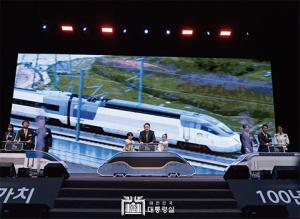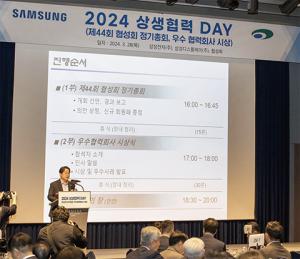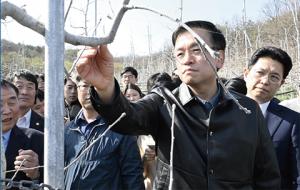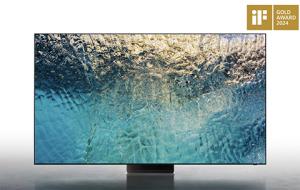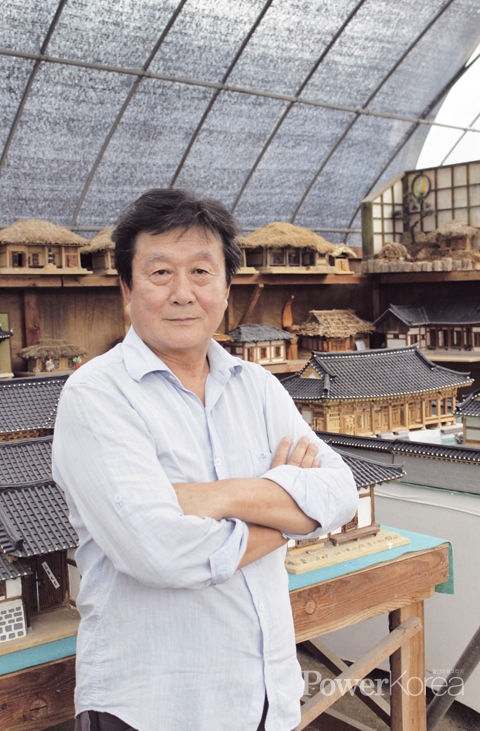 |
||
| ▲ 한국전통가옥협회 이정범 회장 | ||
우리들은 흔히 ‘한옥’이라는 말을 들으면 수려한 곡선과 멋들어진 형태의 기와집만을 떠올린다. 그러나 엄밀한 의미에서의 ‘한옥(韓屋)’이란 우리 민족 고유의 전통적인 건축 양식을 사용한 집, 다시 말해 초가집과 너와집, 굴피집, 기와집 등을 모두 포함한 한국의 전통 건축물을 포괄하는 개념이다. 이에 한국전통가옥협회의 이정범 회장은 잊혀져가는 우리 전통가옥의 의미를 되살리고, 우리 민족의 한과 얼이 서린 주거문화를 부흥시키고자 누구보다 헌신해왔다.
민초들의 삶이 묻어나는 전통가옥의 복원과 재현에 힘써
‘집’이란 우리에게 있어 어떤 의미일까. 예로부터 인간다운 생활을 영위하는데 없어서는 안 될 3요소로 ‘의·식·주(衣食住)’를 꼽은 것에서 보듯, 집은 우리들이 생활하는 삶의 중요한 터전이자 안식처로 자리해왔다. 그러나 현대에 이르러 집이 갖는 의미는 때마다 옮겨가는 거처, 시세차익을 노리는 재테크 수단, 자기과시를 위한 재산 등으로 퇴색되어 버렸다. 현대사회를 살아가는 많은 사람들이 우울증과 불안에 시달리고 있는 이유 중 하나에 심신을 편안히 쉬게 해주는 집의 의미가 상실되어버렸다는 것도 포함되리라는 사실을 부정할 사람은 없을 것이다.
한국전통가옥협회의 이정범 회장은 이처럼 현대사회가 잃어버린 ‘집의 가치’를 회복하기 위해서는 우리네 전통가옥 안에 담긴 선조들의 정신과 정서를 되새기고, 한민족으로서의 정체성을 되찾아야 한다고 강조한다. 그는 “한옥의 형태가 비교적 많이 남아있는 서울 광화문 일대나 한옥마을로 유명한 전주 등을 찾아가 봐도 대부분은 왕족과 일부 지배계층들을 위해 지어진 기와집만이 가득한 것이 현실입니다. 하지만 우리 민족의 대다수를 구성하고 있던 사람들은 양반계층이 아닌 가난하고 평범한 백성들이었습니다. 즉 우리 전통주거문화의 뿌리는 우리 주변에서 쉽게 구할 수 있는 흙과 나무, 돌을 활용한 백성들의 소박하고 정겨운 집에 있다고 할 수 있습니다”라고 설명했다.
그러나 앞서 설명했듯 우리들의 인식 속에 한옥이란 궁궐이나 사찰, 서원 등 고급 기술자들에 의해 지어진 기와집만이 남아있는 것이 사실이다. 이들 대부분은 그 예술성과 고풍스런 미적 감각을 높이 평가받으며 문화재로 지정되어 보호받고 있지만, 백성들의 평범한 집은 그런 보호 정책의 사각지대에 방치되어 왔기 때문이다. 하지만 오히려 민초들의 가옥은 마을사람들이 모여, 혹은 가족끼리 소담스럽게 짓고 살아왔던 공간이라는 점에서 우리 선조들이 영위한 생활의 단면을 직접적으로 보여주는 소중한 매개체가 된다. 이 회장은 “만약 먼 훗날의 후대가 지금의 우리들을 바라보며 소수의 상류층만이 향유했던 고급 문화예술만이 전통이라 얘기한다면 어떻게 될까요. 자연과 어우러지는 건축양식을 중시했던 기와집의 멋이나 운치가 중요하지 않다는 것이 아니라, 그 밖의 영역에서 살아간 백성들의 삶, 그들의 가옥 또한 소중히 존중받고 연구되어야 할 가치를 지니고 있다는 사실을 많은 이들이 깨닫게 되길 바랍니다”라고 말했다.
문화예술정책에 대한 근본적인 인식 개선이 필요해
이에 이정범 회장은 지난 1980년 ‘한국전통민속가옥’을 설립하고 우리 전통가옥을 보전·계승하고자 힘써왔다. 특히, 주목할 만한 점은 그가 사용한 방식이다. 이 회장은 실제 가옥의 크기를 수십, 수백분의 1로 줄인 ‘미니어처(Miniature)’를 통해 전통가옥의 형태를 정밀하고 정확하게 기록하고 있다. 이를 위해 그는 전국 산간오지를 돌아다니며 200개 이상의 전통가옥 형태를 조사했으며, 이 중 지금까지 120여개의 전통가옥을 재현해놓았다. 특히, 실제 가옥을 건축했던 오랜 경험과 직접 현장을 답사하고 고증을 들어 연구해 온 전통가옥의 구조, 소재, 건축법 등을 크기만 줄어든 채로 그대로 구현해놓았다는 것이 가장 큰 특징이다.
이러한 노력의 결과로 그는 1999년 강원도 국제관광 엑스포 출품을 시작으로 2000년 서울국제문화관광 상품전, 서울무역전시관 세계관광상품전, 2002년 우리 꽃 박람회 출품 및 대상 수상, 2005·2006·2013년 고양 국제 꽃 박람회 출품 등 다수의 박람회에 초청받아 재능기부를 펼쳐왔으며, 2007년 자랑스런 명장 10인, 2014년 신창조인대상 수상 등의 영예를 얻기도 했다. 또한, 각종 국제박람회를 통해 소개된 그의 작품은 외국인들의 눈길을 사로잡으며 세계에 우리 전통가옥의 아름다움을 알릴 새로운 한류상품으로 부각되기도 했다.
그러나 수십 년을 이어온 열정에도 불구하고, 대한민국의 문화예술정책이 여전히 제자리걸음 수준이라는 것을 증명하는 사건이 최근 그에게 닥쳐왔다. 그가 작품을 전시, 보관하기 위해 사용되던 경기도 고양시 선유동에 위치한 하우스가 ‘불법’이라는 오명 속에 철거당할 위기에 처한 것이다. 오랜 세월 동안 전통가옥의 아름다움과 정서를 복원하고자 힘써왔으며, 지역사회 다양한 전시와 출품전 등에 작품을 제공해 온 공로는 고사하고 협조와 응원은커녕 현 보관장소와 호젓한 작업 공간이 정책상 불법이라는 이유로 철거하고 원상 복구하라는 제재 속에 모든 것을 체념하고 유목민같이 어디론가 공간 이동을 할 수밖에 없는 처지가 현실이다. 이러한 소식을 알게 된 그의 작품을 사랑해 온 수많은 문화예술인들과 대중들의 분노가 폭발하고 있다. 이 회장은 “제가 평생을 바쳐온 일이 한 순간에 ‘불법’처럼 취급받았다는 것에 화도 나지만, 무엇보다 서운하고 안타까운 마음이 큽니다. 그동안 한국의 전통문화를 알리고 지키는 사람으로서 사사로운 이득보다는 사회를 위해 좋은 활동을 많이 해왔다고 생각했는데 그러한 점이 전혀 인정받지 못한 것 같아 서운하고, 한편으로는 우리나라의 문화예술정책이 그 본질을 전혀 이해하지 못하고 그저 행정적인 잣대로만 평가를 내리는 수준에서 벗어나지 못한 것 같아 안타까운 마음이 듭니다”라고 토로했다. 그러면서 이 회장은 이런 말을 덧붙였다. “몇 년 전 지인의 소개로 어느 외국 언론사에서 취재를 왔는데 저의 작품과 그 속에 내재한 초라한 작업 공간을 보고 경악하며 한 말이 생각나네요. 당신의 나라에서는 이런 훌륭한 일을 하는 사람을 이런 식으로 방치해 두냐고 하더군요 그런데 그 나라에 가서는 제가 어떻게 소개됐을까요.”
움직이는 전시관, 전국 곳곳에 전통가옥의 ‘美’를 전할 터
이정범 회장이 겪고 있는 어려움을 바라보는 제자들과 관련 문화예술인들이 입을 모아 지적하는 문제는 이 뿐이 아니다. 40여 년 가까운 세월동안 전통가옥 재현의 한 길을 걸어오며 남다른 원칙과 고집, 엄격한 고증과 탁월한 기술로 미니어쳐 가옥을 예술의 경지로 끌어올렸다는 평을 받고 있지만, 이것이 무형문화재, 인간문화재로 등록되지는 못하고 있는 현실에 대한 것이다. 이는 국내 중요무형문화재법이 갖고 있는 큰 맹점 중 하나로, 현재 국내법상 무형문화재로 등록가능한 연극·음악·무용·공예·기술 등의 범주에 미니어처가 포함되지 않기 때문이다. 그러나 과거 2008년 숭례문이 전소됐을 당시, 복원팀에서 연락이 와 ‘제작해 둔 미니어처가 있다면 복원에 참고할 것’이라 문의했던 것에서 보듯 그의 철저한 고증과 이에 기반한 정교한 예술성은 무형문화재 등록에 무리가 없다는 것이 전문가들의 공통된 의견이다. 이미 미니어처를 공예예술의 한 장르로 인정하고 있는 외국의 경우처럼 우리나라 또한 인식의 폭을 넓히려는 노력이 필요하다.
갖은 어려움과 예기치 못한 고난에도 불구하고 이정범 회장은 수십 년간 이어온 자신의 꿈을 포기하지 않았다. 그가 현재 계획하고 있는 것은 바로 ‘움직이는 전시관’이다. 그동안 제작한 전시작품들을 싣고 전국 곳곳에서 상설전시를 열어 보다 많은 이들이 전통가옥의 아름다움과 정서를 체험할 수 있도록 하는 것, 계절의 흐름에 따라 전시관 작품의 계절 풍경도 변화하고, 움직이는 인형과 기구들로 한국의 옛 이야기들을 구성해 보여주는 것이 그의 목표이다. 이 회장은 “철근과 콘크리트로 이루어진 도시 문명 속에서 따뜻하고 정감 있는 옛 집에 대한 향수는 더욱 커지고 있습니다. 더 많은 이들이 우리 전통가옥의 중요성을 깨닫고, 이를 이어나갈 때까지 굽히지 않는 신념과 사명감으로 이 일을 계속 해나갈 생각입니다”라며, 이에 대한 각 지자체 및 문화예술 관련기관의 관심과 지원을 바란다고 덧붙였다. 아울러 전통가옥의 현대적 적용에도 관심을 가진 이 회장은 ‘조립식 퓨전 전통가옥’에 대한 특허를 취득했으며, 간편하게 지을 수 있는 조립식전통가옥에 한국 전통가옥의 미를 담아내고자 노력할 계획이며, 민간자격등록증으로 전문가를 양성하고 보급하는 데에도 힘쓸 것이라 밝혔다.
불광불급(不狂不及)이라는 말이 있다. 어떤 일을 하는 데 있어서 미치광이처럼 매달리지 않으면 원하는 목표에 도달할 수 없다는 뜻이다. 스스로를 ‘전통가옥에 미친 사람’이라 일컬으며 한결같은 고집으로 전통가옥 외길을 걷고 있는 이정범 회장. 우리 시대 장인의 모습이란 바로 이런 것이 아닐까. 꺼지지 않는 불처럼 뜨겁게 타오르고 있는 그의 변함없는 열정은 <월간 파워코리아>가 응원한다.
The value of shelter found in traditional Korean house
Chairman Lee Jung-bum of Korea Traditional House Valuable Culture Improvement
Years of passion and sweat in recovery and revival of Korean traditional house
What does ‘house’ mean to us? We know that food, clothing and shelter are the three basic elements for us to survive. To take a look at the shelter in the past, it functioned as a place to rest and to protect our body from weather and danger. To take a look at it today, it has become a means of speculation, of self-display and of migratory habitat for those hard ups.
Chairman Lee Jung-bum of the Korea Traditional House Valuable Culture Improvement emphasizes on the importance of recovering the value of shelter in studying of the spirit and sentiment of traditional Korean house.
“The Korean houses around the Gwanghwamun areas and Jeonju Hanok Village, where a lot of visitors come and go, are mostly the houses dwelled by ruling classes. But we need to take a note of the fact that majority of Koreans were commoners who lived in houses made of soil, logs and stones” says Lee.
It is true that most Korean houses presented to visitors are palaces, temples, Confucian lecture halls and classy title-roofed houses. People praise the beauty of the buildings and the government protects them as culture assets while commoners’ houses are ignored. Why commoner’s houses are important for us is because we can learn our ancestors’ life, culture and the tools used, etc.
“How would we feel if our off springs in the future talk about tradition and art of Korea that were only enjoyed by the high class? I don’t mean to say that the beauty of classy architectures or cultures in disapproval. I’m pointing out about the balance and what we are missing on our study and research.”
“Improving awareness on cultural policy is needed”
Lee took the action in 1980 by introducing The Korea Traditional House Valuable Culture Improvement to protect and pass down the tradition. Lee exerted a considerable amount of time and effort in making ‘miniature’ to realize preciseness and perfection of the traditional houses. He traveled every corner of the Korean land in seeking of traditional houses and carried out researches on more than 200 houses of which 120 are reproduced by him. Lee is an expert in structure, materials and construction of the Korean house and the reproduce was done based on his knowledge and experience as well as the field visiting and historical researches.
Lee’s miniature works were displayed in number of exhibitions including The Gangwon International Tourism Expo (1999), The Seoul International Culture & Tourism Product Exhibition (2000) and The World Tourism Product Exhibition (2000). He won the grand prize at The Korean Flower Show (2002) and was invited to The Goyang International Flower Festival (2005/2006/2013) and listed his name in The 10 Proud Korean Masters 2017 and The 2014 New Creators Awards. His miniature Korean houses attracted a great attention especially from foreign visitors in the exhibitions.
However, Lee regrets that Korea’s cultural policy still seem to go round in circles. His house in Gangmae-dong, Deokyang-gu, Goyang City is at the risk of being torn down because it is ‘illegal’. Knowing the news, Lee’s fellow artists and architects and the people who value his works are bursting out their anger.
“I feel really angry that the work of my whole life is treated as ‘illegal’. It is sad that things should go like this. I’ve devoted my whole life to studying and spreading the value of traditional Korean house and I think I’ve never attempted anything for my own gain. I feel really disappointed that all those efforts seem to be useless and that the Korea’s cultural policy seem to approach the things on the administrative side only rather than understanding the values.”
Lee tells us an episode when he met an overseas reporter “The reported wanted to write an article about me and we met at my studio. He was shocked to find the studio way to humble compared to the works I produced and said ‘How on earth your country can treat a talented person like you like this?’ I wonder how he introduced me in his article when he went back to his country.”
Spreading the beauty of Korean house with moving exhibition hall
The disappointment not only stops there: despite the recognition on his 40 years of expertise in traditional house and miniature production, his works are not registered to the intangible cultural assets or himself to the human cultural assets. This is because the current Important Intangible Cultural Property Act does not include miniature in the categories alongside play, music, dance, craft and technique. But experts voice together that it is not unnatural for Lee and his works to be registered as such because his works are built based on historical researches and they have artistic value. When Sungnyemun Gate was burnt down in 2008, the recovery team called Lee that they might needed his miniature of the gate for reference. This means that Korea also needs to recognize miniature as part of art genre like some countries overseas.
Not despondent, Lee never gives up his passion: he is planning to introduce a ‘moving exhibition hall’. The idea is that he displays his works on a moving exhibition hall and move around the whole nation so that more people can enjoy and experience the beauty of Korean house. Lee plans to adjust the display according to each season and to add dolls and props to deliver once upon a time stories to people.
“I think the city dweller’s interest in traditional house is increasing because they yearn for natural materials over steels and concrete. I hope my idea of moving exhibition hall will be an opportunity for many people to realize the importance of Korean house. And I have a sense of duty to keep carrying on this valuable works.”
To push a little bit further of his ideas, Lee has brought up an idea of ‘assemblable fusion traditional house’ and already obtained a patent while working on private qualification and training.
There is a saying “You cannot achieve what you want if you are not crazy about it.” And Lee calls himself ‘a man who is crazy about Korean house’.
임세정 기자 cream132@naver.com

